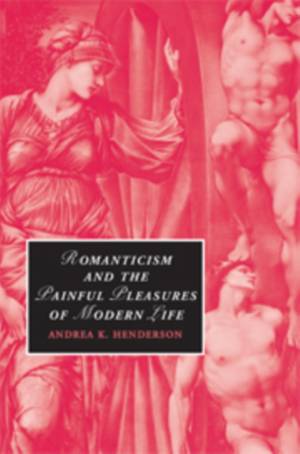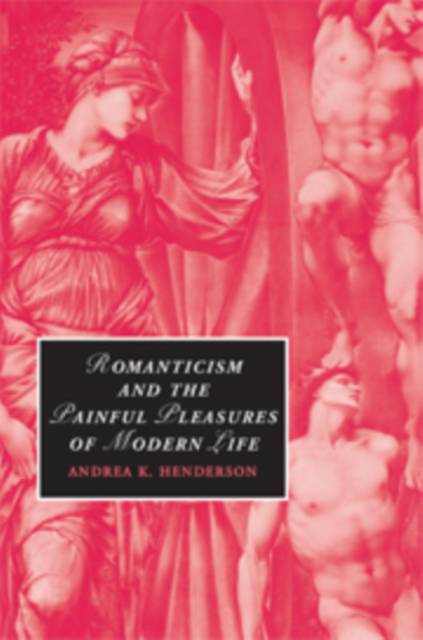
- Afhalen na 1 uur in een winkel met voorraad
- Gratis thuislevering in België vanaf € 30
- Ruim aanbod met 7 miljoen producten
- Afhalen na 1 uur in een winkel met voorraad
- Gratis thuislevering in België vanaf € 30
- Ruim aanbod met 7 miljoen producten
Zoeken
Romanticism and the Painful Pleasures of Modern Life
Andrea K Henderson
€ 172,95
+ 345 punten
Uitvoering
Omschrijving
In their pursuit of emotional extremes, writers of the Romantic period were fascinated by experiences of pain and misery, and explored the ability to derive pleasure, and produce creative energy, out of masochism and submission. These interests were closely connected to the failure of the industrial and democratic revolutions to fulfil their promise of increased economic and political power for everyone. Writers as different as Frances Burney, William Hazlitt, John Keats, and Lord Byron both challenged and came to terms with the injustices of modern life through their representations of submission. In this book, Andrea K. Henderson teases out these configurations and analyses the many ways ideas of mastery and subjection shaped Romantic artistic forms, from literature and art to architecture and garden design. This provocative and ambitious study ranges widely through early nineteenth-century culture to reveal the underlying power relations that shaped Romanticism.
Specificaties
Betrokkenen
- Auteur(s):
- Uitgeverij:
Inhoud
- Aantal bladzijden:
- 314
- Taal:
- Engels
- Reeks:
- Reeksnummer:
- nr. 75
Eigenschappen
- Productcode (EAN):
- 9780521884020
- Verschijningsdatum:
- 21/04/2008
- Uitvoering:
- Hardcover
- Formaat:
- Genaaid
- Afmetingen:
- 160 mm x 231 mm
- Gewicht:
- 630 g

Alleen bij Standaard Boekhandel
+ 345 punten op je klantenkaart van Standaard Boekhandel
Beoordelingen
We publiceren alleen reviews die voldoen aan de voorwaarden voor reviews. Bekijk onze voorwaarden voor reviews.











